#Passover 5783
Text
Schlissel challah 🗝
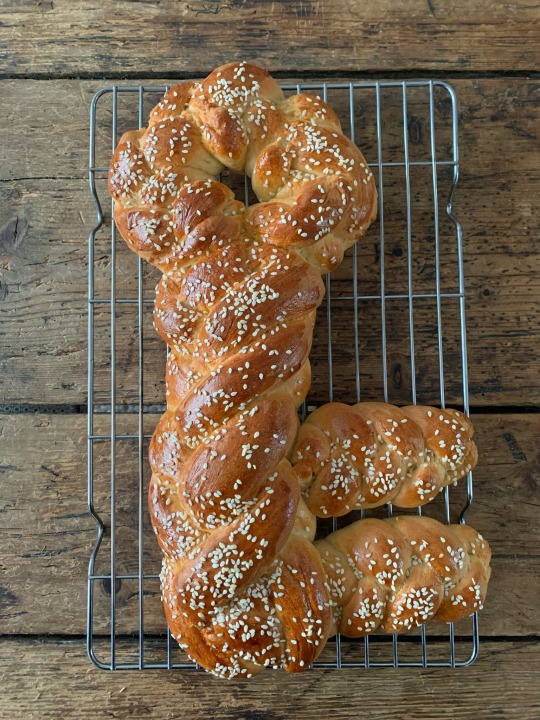

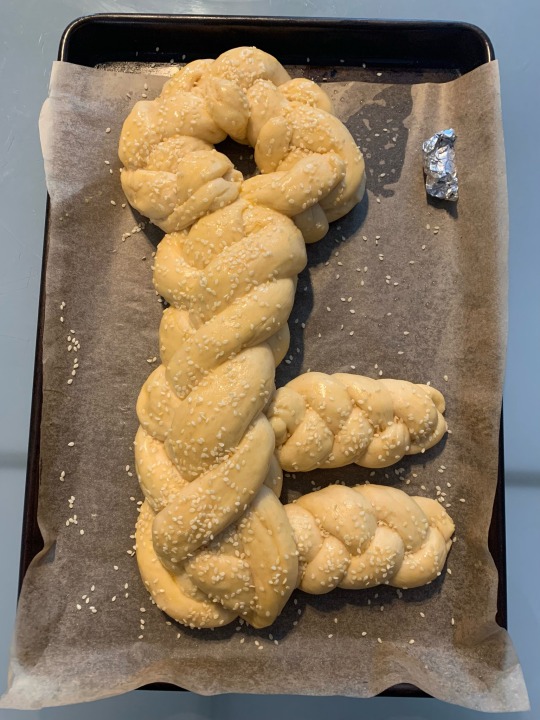
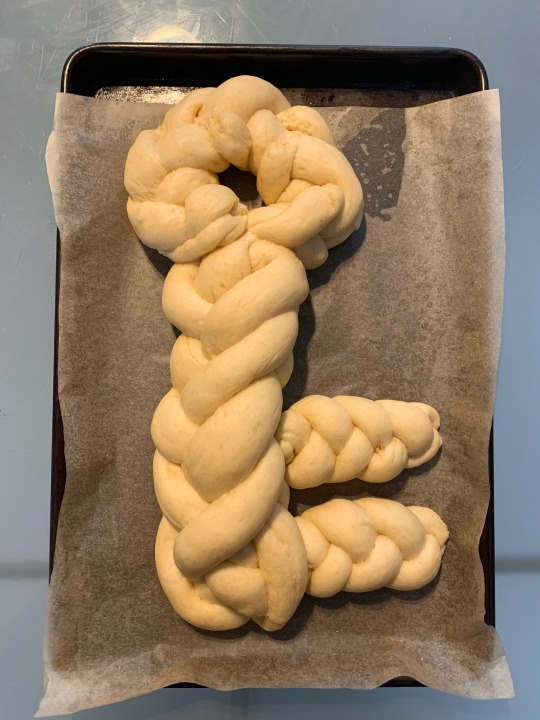

Baking challah in the shape of a key (schlissel meaning key in Yiddish) is an Ashkenazi tradition the Shabbat after Pesach, and is said to represent the key to the promised land. I’m usually team poppyseed but sesame seeds are traditional for schlissel challah, because they are supposed to resemble the manna we ate in the desert.
I couldn’t find a technique I liked so I just made one up- I did a 5-strand braid for the stem, and a standard 3-strand for the teeth and the head.
Hope everybody had a wonderful chag!
#challah#jewish food#schlissel challah#shlissel challah#passover#pesach#פסח#פסח 5783#peysakh#pesah#jumblr#jewblr#ashkenazim#ashkenazi#pesach 5783#Passover 5783#pesach 2023#Passover 2023#judaism#queer judaism#kosher food#kosher
440 notes
·
View notes
Text

Passover, 1944: A respite amid preparations for D-Day
In 1944 Passover began at sundown on April 7th, a Friday.
By this time Allied troops were busily massing along the South Coast, although of course no one knew when the invasion would begin. Passover, with its tale of the Israelites crossing the Red Sea — and which also offered a chance for a change of pace and scene — must have been intensely meaningful for military personnel at that moment.
These photos were taken at a seder held that year "somewhere near London" and attended by more than 700 British and American troops.

It took place in an airplane hangar, I'm guessing.
The organizing seems to have been done mostly by British personnel:

(No American rabbi would be caught dead wearing that contraption around his neck. The photo caption refers to this gentleman as "The Jewish Chaplain to the Forces," but there was in fact more than one.) Having said this, I should point out that Goodman's, which supplied the matzah seen in these photos, was an American bakery, and those present seem to have represented a cross-section of the Allies.

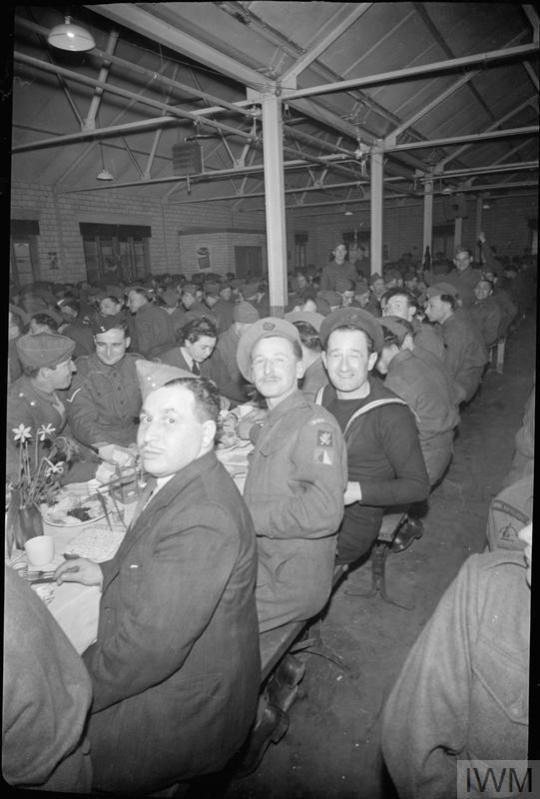
A good seder is participatory. Here, Pte. Leopold Rosenbaum, a native of Bratislava who had arrived in the U.K. in 1938, helps lead the service:
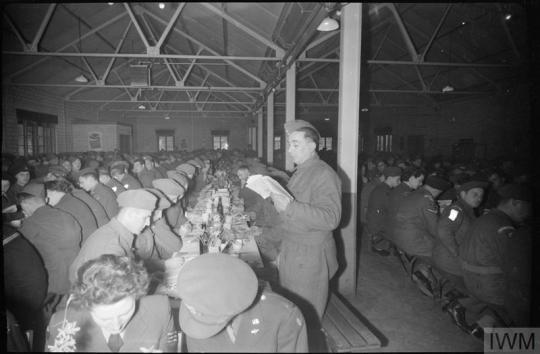
The foods shown in the top photo are ceremonial, eaten before the actual meal, which isn't served until fairly late in the proceedings. Here, "Non-Jewish members of the Army Catering Corps serve the main fish course to Jewish service personnel," according to the caption:
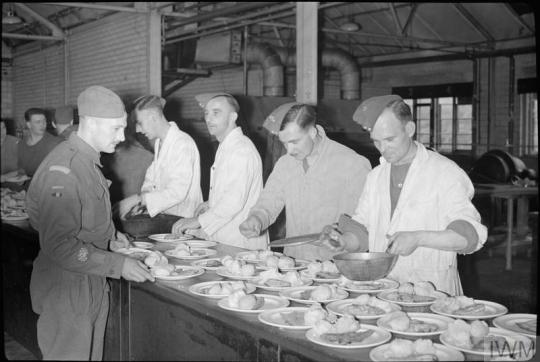
They probably cooked the meal as well, and must have wondered what they'd let themselves in for.
(Photos, top to bottom: © IWM D 19336, D 19334, D 19335, D 19339, D 19338, D 19340, D 19337.)
19 notes
·
View notes
Text

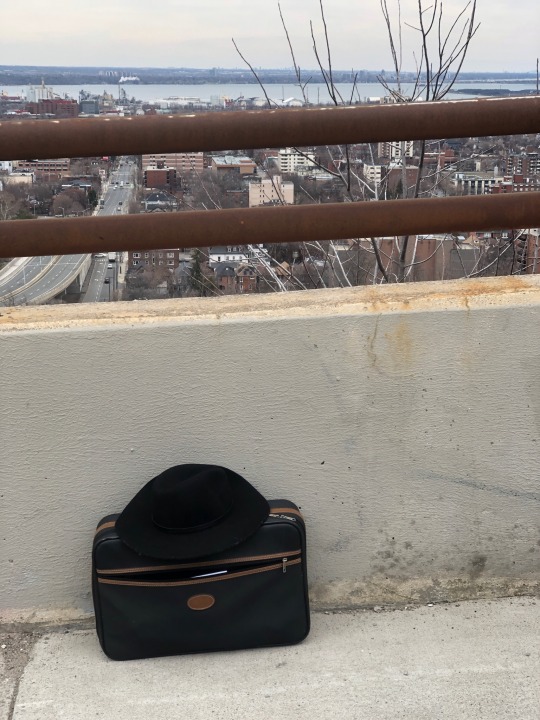


First Night of Passover 5783
A friend invited me over for a small Seder and had a room for me to stay overnight. We davvened Maariv and had a Sephardic Seder. We were up until 2am talking Talmud and Halacha. It’s a night I will never forget.
2 notes
·
View notes
Text
CHAG PESACH SAMEACH
221 notes
·
View notes
Text
80th Anniversary of the Warsaw Ghetto Uprising: "The World Has to Know That We Did Not Go Like Lambs to the Slaughter."
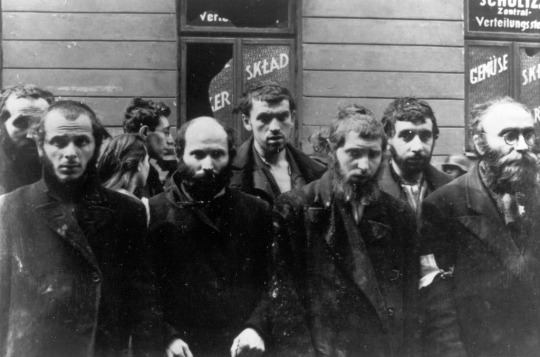


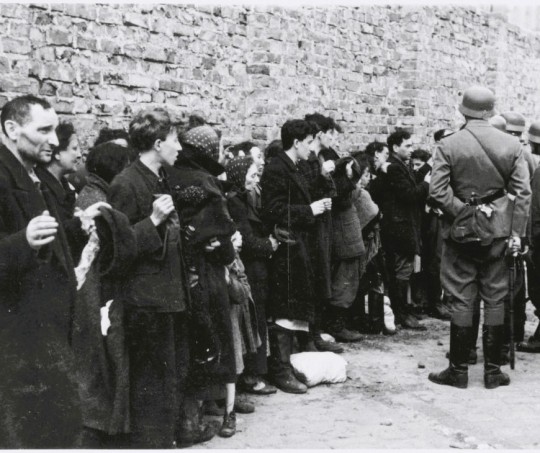
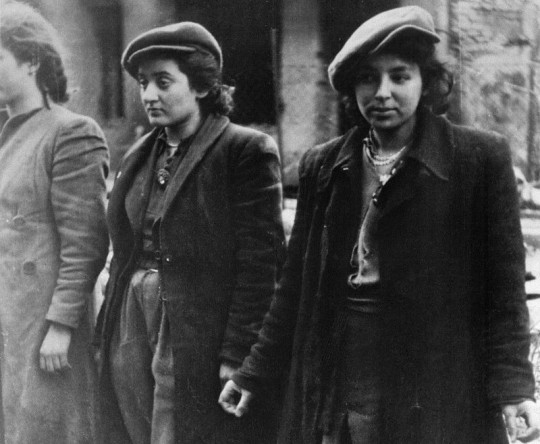
April 19th, 1943 - May 16th, 1943
Warsaw, Poland
“The question is not why all the Jews did not fight, but how so many of them did. Tormented, beaten, starved, where did they find the strength, spiritual and physical, to resist?” – Elie Wiesel
In the morning of April 19th, 1943, on what would be the first night of Passover, the Warsaw Ghetto Uprising began. German troops and SS entered the ghetto to deport its surviving inhabitants to the death camps.
In the summer of 1942, as Jews living in the Warsaw ghetto were deported to Treblinka, reports that made their way back quickly made it clear that "resettlement" meant mass-murder. In response to this, Jews citizens in the ghetto began forming organized resistance forces; the Jewish Combat Organization (ŻOB) and the Jewish Military Union (ŻZW).
Following the January 1943 success of a smaller-scale resistance preventing a deportation attempt, an act that led to the suspension of such deportation efforts by the Nazis, the residents began to secretly build subterranean tunnels and shelters in preparation for a full-scale uprising.
Throughout April rumours swirled of a final deportation of the ghetto's remaining Jews. On the 18th it became clear that German forces, reinforced with artillery and tanks, were moving in to carry out their final action. The alarm was raised, and residents retreated to their underground shelters. They would remain here for the duration of the uprising, refusing to surrender themselves to deportation.
A group of around 700 Jewish resistance fighters, made up of the ŻOB and ŻZW and led by 24-year-old Mordechai Anilevitch, joined together to stage what would be their final stand against the Nazis. These brave young people were malnourished and lacked proper military training, they were equipped with nothing but poor-quality or even homemade weapons and their bare hands.
By contrast German forces numbered 2000, they were well-equipped and well-trained and had advanced knowledge of the existence of these resistance groups.
Despite this stark imbalance, on the first day of the uprising the ragtag Jewish fighters met the invaders head on and successfully forced the Nazis to retreat outside the city walls.
Amongst all of the chaos and destruction all around them, the Jews hiding in the tunnels and bunkers gathered together to celebrate Passover with what little they had, breaking homecooked matzah and drinking illicitly obtained wine.
The Warsaw Ghetto Uprising held strong for a full 27 days, coming to an end on May 16th, 1943. Unable to gain a full advantage, the Germans had resorted to burning the Warsaw Ghetto to the ground in an attempt flush out those in hiding so they could be rounded up.
In the months following the official end of the uprising some Jews remained hiding out in the rubble, periodically attacking German police on patrol.
This was the largest uprising by Jews during World War II and the first significant urban revolt against German occupation in Europe. It inspired many more uprisings, especially amongst Jews in camps and Ghettos.
May Their Memories Be a Revolution
Learn More:
Warsaw Ghetto Uprising | Holocaust Encyclopedia
Holocaust Survivors Describe the Last Passover in the Warsaw Ghetto
Tuesday, Nissan 27, 5783 / April 18, 2023 - Jewish Calendar - On This Day
#jumblr#jewish#judaism#yom hashoah#holocaust remembrance day#the shoah#shoah#shoah remembrance day#holocaust#the holocaust#shoah mention#holocaust mention#antisemitism#antisemitism tw#tw antisemitism#jewish history#nazi tw#warsaw#warsaw ghetto#warsaw ghetto uprising#may their memories be a blessing#may their memories be a revolution#a few days early
2K notes
·
View notes
Text
26 May 2023 - 6 Sivan 5783
Yes, today is Shavuot, the festival marking both when the Torah was received at Sinai, and celebrating the spring harvest.
Shavuot means “Weeks,” and occurs “a week of weeks” (49 days) after Passover. It marks the conclusion of the period of Counting the Omer, where the days and weeks are counted to show anticipation of receiving the Torah.
The holiday is one of the Three Pilgrimage Festivals, along with Passover and Sukkot, when in the times of the Temple, Israelites would make pilgrimage to the Temple and bring the first fruits of their harvests.
Shavuot does not have many biblical mitzvot (commandments) associated with it, but there are several wide-spread customs. These include consuming dairy products, reading the Book of Ruth, decorating the home and synagogue with greenery, and staying up all night studying Torah.
Staying up all night studying originates from that the night before the Israelites were to receive the Torah, they retired early to be well rested, but when it came to morning they overslept, and Moses had to awake them. To “rectify” this, it is common to stay up all night studying Torah.
Shavuot is typically celebrated for one day in Israel, and two days in the Diaspora. The reform movement typically observes one day world wide.
Chag Shavuot Sameach—Happy Shavuot!
Shabbat begins at sundown.
347 notes
·
View notes
Text
ok so im not sure that this is articulate for ppl who aren't calendarheads like me but the jewish and islamic calendars are both calendars in which a year is 12 lunar cycles, and the difference is that the jewish calendar has leap months whereas the islamic calendar does not. so every 2/3 years, the jewish calendar actually has 13 months, and so each time there's a leap month, the jewish and islamic months become out-of-sync by one month. the jewish leap months are timed so that the calendar is in accordance with the metonic cycle (the way that the lunar and solar cycles always align in the same way they did 19 years previously). which is to say, since the jewish calendar was standardized, there have been cycles of 19 years wherein there is a leap month during the 3rd, 6th, 8th, 11th, 14th, 17th, and 19th years (sidenote—you can find what year we are in the cycle by dividing the jewish year by 19 and taking the remainder. for example, this year is 5783, and 5783/19=304r7, so it's the 7th year in the cycle, and not a leap year). but last year was the 6th year in the cycle—it was a leap year. so, it shifted the jewish calendar wrt the islamic calendar, and it put the month nissan (the month in which passover is celebrated) in alignment with the month of ramadan. this year, ramadan and nissan will stay in alignment. and next year, the 8th year in the cycle, ramadan will be in alignment with the leap month itself, which is inserted before nissan. so, it'll take 12 more jewish leap years before nissan and ramadan co-occur (if you look closely, you'll notice that it takes 33 years for 12 jewish leap years to occur, and you might recognize 33 as the number of years it takes for the islamic calendar to fully cycle around the gregorian calendar. which, of course, is not a coincidence!). as you can see, most of the gaps between leap years are 3 years long, but at the current part of the cycle, it's 2 years long. ANYWAY all this is to say that if it were a 3-year gap rn we'd be able to reuse that he is risen/he is not/he is off-limits until sunset meme for 3 years instead of just 2. sad.
#also I've decided that calendarhead is the best term for someone who is nerdy about calendars#english is usually really good at having words for things like that but it doesn't here#txt#also yesterday i asked some catholic acquaintances whether ash wednesday was always on the new moon and they didn't know. sad#but then i realized that i was able to figure out the answer myself lol#hmm my dad made a mathematical formula for whether it's a leap year but i forget what it was.... i should ask him#this is also all a little bit more complicated by whether ramadan falls before/during or after adar on the jewish calendar but we dont need#to get into that. well we dont need to get into any of this but it Is fun so#jew tag#<- tagging it mainly so i can find this post again if i want lol#calendars
80 notes
·
View notes
Text
Gentle reminder:
It's Passover again
(from the 15th to the 22nd. Nissan 5783 / April 5th to 13th 2023).
In these days, Jewish people around the world celebrate Pessach (Passover), which commemorates the liberation of the hebrews from slavery in Egypt.
May the festival be a symbol for all of humanity for liberation from war and warlike conflicts and for peaceful coexistence in the name of freedom and justice.
Chag sameach Pessach.
A happy Passover!
#thought of the day#thought of today#inspiring thoughts#jewish people#humanity#mankind#pessach#passover#15th of nissan#celebrate#freedom#celebrate freedom#liberation#end slavery#no more slavery#chag sameach#end war#peace#justice#understanding#chag sameach pessach#a happy passover
38 notes
·
View notes
Text
Let’s talk about something I just heard.
“In the year of our lord, 2023”
Nope. Not OUR lord. YOUR lord.
This was said during the Nathan’s hot dog eating contest. It’s not a big deal, but Christianity is the reason it’s 2023. It’s actually the year 5783 and super close to 5784, if we wanna look at in through another lens.
Saying it’s 2023 is fine. That’s the way the entire world keeps dates, since it’s a Christian centric world.
But saying “year of our lord” boldly and loudly at a hot dog eating contest, and then following that up with more Christian stuff without a second thought, just shows how causally and common Christianity is in our society. You can’t escape it, no matter what. Did that announcer need to say the religious parts? Nope. But he did because it’s so unconsciously a part of speech. Like when people were saying “my brother/sister in Christ.”
That is why exposing antisemitism is so difficult, because people assume it’s Nazi flags and graffiti and physical altercations… And yes, it is those, but it’s also the othering of Jewish people in society by loudly and proudly cementing Christianity over any other religion while not admitting that it’s happening. How many Hanukkah commercials do you see during winter? How many Passover commercials during Spring? Othering and excluding may not be outwardly thought of as hate, but it’s because it’s a stepping stone that leads to more.
Next time you wanna announce someone at a hot dog eating contest, maybe just leave off the “our lord” bit. If you want to be specific and are dying for that religious ecstasy, say in the “year of Christ, 2023.” Then maybe also remove your bible versus from the hot dog eating contest too, because it’s not necessary. Am I offended? No. Do I need Christianity shoved in my face and down my throat as I watch grown men shove hotdogs down theirs? No.
The world is Christian-centric. It is an undeniable fact.
19 notes
·
View notes
Text
Rewatching Prince of Egypt to close out Passover 5783 (a particularly stressful season for some reason) and I’m already crying
10 notes
·
View notes
Text
Passover Remembered
A poem from our Haggadah this Pesach 5783...
.
Pack nothing. Bring only your determination to serve and your willingness to be free.
Don’t wait for the bread to rise. Take nourishment for the journey, but eat standing, be ready to move at a moment’s notice.
Do not hesitate to leave your old ways behind – fear, silence, submission.
Do not take time to explain to the neighbors. Tell only a few trusted friends and family members.
Then begin quickly, before you have time to sink back into the old slavery.
Set out in the dark. I will send fire to warm and encourage you. I will be with you in the fire, and I will be with you in the cloud.
You will learn to eat new food and find refuge in new places. I will give you dreams in the desert to guide you safely home to that place you have not yet seen.
The stories you tell one another around your fires in the dark will make you strong and wise.
Outsiders will attack you, some will follow you, and at times you will be weary and turn on each other from fear and fatigue and blind forgetfulness.
You have been preparing for this for hundreds of years. I am sending you into the wilderness to make your way and to learn my ways more deeply.
Those who fight you will teach you. Those who fear you will strengthen you. Those who follow you may forget you. Only be faithful. This alone matters.
Some of you will die in the desert, for the way is longer than anyone imagined. Some of you will give birth.
Some will join other tribes along the way, and some will simply stop and create new families in a welcoming oasis.
Some of you will be so changed by weathers and wanderings that even your closest friends will have to learn your features as though for the first time.
Some of you will not change at all.
Sing songs as you go, and hold close together. You may, at times, grow confused and lose your way.
Continue to call each other by the names I’ve given you to help remember who you are. You will get where you are going by remembering who you are.
Tell your children lest they forget and fall into danger – remind them even if they were not born in freedom but under a bondage they no longer remember, which is still with them, if unseen.
So long ago you fell into slavery, slipped into it unaware, out of hunger and need.
Do not let your children sleep through the journey’s hardship. Keep them awake and walking on their own feet so that you both remain strong and on course.
So you will be only the first of many waves of deliverance on these desert seas. Do not go back.
I am with you now and I am waiting for you.
#chag pesach sameach#happy second night seder to all who celebrate#poem adapted from the writing of alla renee bozarth
8 notes
·
View notes
Text
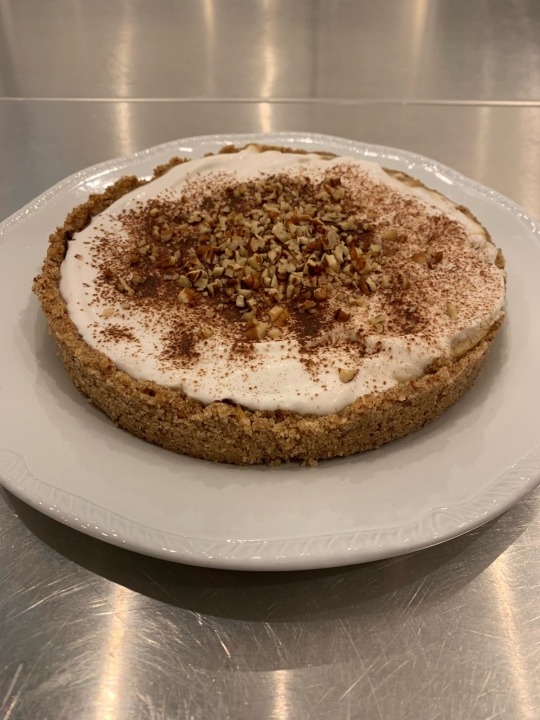
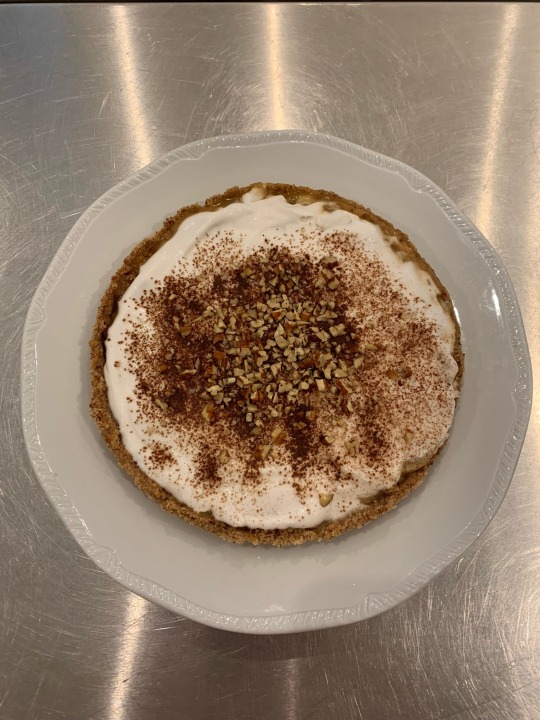

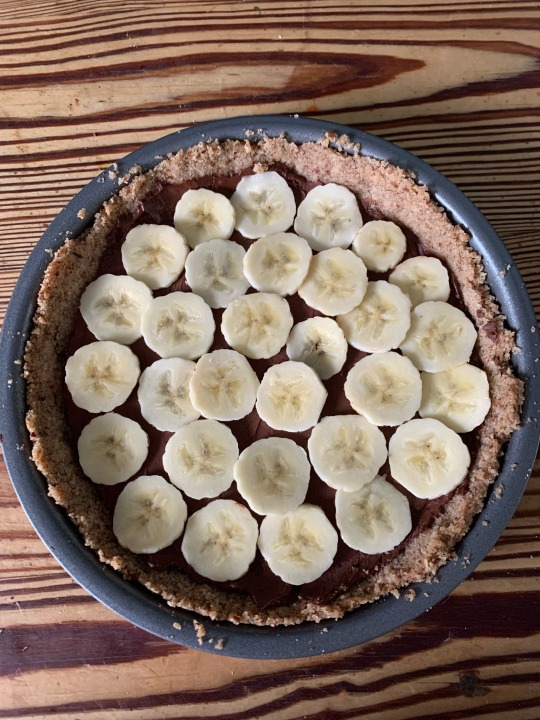


Vegan Passover Pecan-Banoffee Pie: my magnum opus
I set out with a dream. An impossible dream. To create a vegan dessert for my synagogue seder that was also kitniyot-free. Did I have to do this? Not really, my shul allows anything vegan, vegetarian or pescatarian that doesn’t have chametz, and we have a section for kitniyot. Am I vegan? No. Do I even keep kosher for Passover myself? Also no. But, you see, I have an almost pathological need to feed as many people as possible, and I am intractably stubborn, so once I realised how difficult this was going to be it only made me dig my heels in further.
It turns out to be borderline impossible to find vegan substitutes for pretty much anything that don’t contain soy, oats, cornflour, chickpeas, or some sort of forbidden legume. Subsequently this recipe is heavily reliant on coconut milk; luckily for me I live in an area with a large Muslim population and it’s currently Ramadan, so tins of coconut are front and centre of every supermarket display.
It’s taken almost a full month of trial, error and meltdowns in the butter aisle of Sainsbury’s, but I finally did it. I had to cobble bits of the recipe together from half a dozen different sources, so I feel relatively justified in calling this my own invention. The pecan crust is borrowed from a Tori Avey cheesecake recipe, I just swapped pistachios for pecans. I really think the crust is what makes it, to be honest. You could probably skip the ganache layer if you can’t be bothered, I just feel like it helps cut through the sweetness.
Recipe under the cut. Please please tag me if anyone decides to make this! I would be so delighted to see it out there in the world.
Crust
84g (⅔ cup) pecans
84g (⅔ cup) pecans
84g (⅔ cup) pecans
60g (½ cup) matzo meal
66g (⅓ cup) granulated sugar
71g (5 tbsp) Kosher for Passover vegan margarine (Rakusen’s Tomor*), melted, + extra for greasing
Pinch of salt (optional)
Ganache
113g KFP vegan dark chocolate (Lindt Excellence 70%, Green & Black’s 70%, Green & Black’s cooking chocolate are all KFP)
113g coconut cream/full-fat coconut milk
A few drops of vanilla extract (optional)
Caramel
200g caster sugar
100g KFP vegan margarine (Tomor)
200g coconut cream/full-fat coconut milk
Whipped cream
200g coconut cream/full fat coconut milk, kept in the fridge overnight
15-45g KFP icing sugar (check it doesn’t contain maize starch. You could probably omit the sugar and leave the cream unsweetened if you can’t find it, or grind your own- there are recipes for Passover powdered sugar online.)
¼ tsp vanilla extract
3-4 bananas
cocoa powder or grated chocolate to serve (optional)
chopped pecans to serve (optional)
Method
Make the caramel. Place the sugar into a medium / large saucepan. Place the pan on the hob over a low heat. Allow the sugar to melt, this will take around 5-8 minutes. Don’t burn the sugar! Make sure to stir constantly to prevent burning. You can use a wooden spoon or heat proof spatula.
When all of the sugar has melted and is a golden / amber colour, add in the margarine. Be careful, as the sugar is very hot. Remove the pan from the heat and stir to combine. Allow the margarine to melt into the sugar. It might bubble but that's fine. Once it’s combined, it might have a thick consistency. It might look like the margarine isn’t mixing with the sugar, but it should combine once you add the cream. Now add in 200g coconut cream. It will steam and bubble again so be careful.
Add the pan on the heat and allow to simmer for 3-5 minutes to help thicken it up.
Remove the pan from the heat. Set aside to cool for 30 minutes, then transfer / pour the caramel into a heat proof jar. Place the jar into the fridge. Allow to chill overnight. The coconut cream for the whipped cream should also be kept in the fridge overnight, to encourage it to separate and firm up.
If the caramel separates overnight, use an electric whisk to combine into a smooth consistency until there are no remaining lumps. It’ll be a more custard-like texture but still delicious. Keep caramel in the fridge until needed.
Make the crust. Preheat oven to 180˚C. Grease a loose-bottomed tin with margarine and line with greaseproof paper.
Blitz the pecans in the food processor until finely processed. Add matzo meal, salt and sugar and pulse until the entire crust is uniform in colour. With the processor on, drizzle the melted butter into the machine.
Once all the butter has been added, turn the processor off and dump the wet crumbs into the bottom of the lined pan. Using the back of a spoon, press the crumbs evenly into the bottom and up the sides of the pan (it doesn’t have to go all the way up, just as much as you can).
Place the crust in the oven for 8-10 minutes, or until the edges of the crust start to brown a bit and smells fragrant. Leave crust to cool for about ten minutes and then transfer to the fridge to finish cooling.
Make the ganache. Finely chop the chocolate and put in a medium-sized bowl. Put 200g coconut cream in a microwave-safe bowl and heat in the microwave for about 1 minute, watching to make sure it doesn’t bubble over.
Pour the warm cream over the chocolate chips and let sit for 2-3 minutes. Don't stir yet.
After 2-3 minutes, whisk the chocolate/melted coconut milk until smooth. Add vanilla if desired. Let cool in the fridge for around 30 minutes.
Make the whipped coconut cream. Chill a mixing bowl in the fridge for ten minutes (you can do this while the ganache is cooling to save time). Put 200g coconut cream (the thick white part, not the clear liquid) in the chilled bowl. Beat for 30 seconds with an electric whisk until creamy. Add vanilla and icing sugar and mix until creamy and smooth – about 1 minute. Avoid overwhipping because it can cause separation. Taste and adjust sweetness as needed.
Carefully run a knife around the edge of the crust tin and remove the crust from the tin.
Spread a layer of the cooled ganache over the bottom of the crust. Top with a layer of sliced banana and return to the fridge to set for ten minutes.
Add a layer of the caramel, another layer of sliced banana, and return to the fridge for ten minutes again.
Top with the whipped cream (I like to leave the edge of the bananas visible around the edge). Dust with cocoa powder or grated chocolate and add chopped pecans if desired.
*Tomor contains sunflower oil, but sunflower oil is not considered kitniyot in England: https://www.kosher.org.uk/article/sunflower-oil-kitniyot
#Passover recipe#pesach 5783#pesach 2023#pesach recipe#passover#Passover 5783#Passover 2023#Passover food#pesach food#פסח 5783#פסח#פסח שמח#jumblr#judaism#jewish#jewish food#kosher#kosher food#kashrut
76 notes
·
View notes
Text
Passover, 1944: with the Forces in Italy
With all that's been written about the vast movement of Allied troops to England's South coast in the Spring of 1944, in preparation for the invasion of Normandy, it's easy to forget that the liberation of Europe had already begun, with the Sicily landings of the previous July. So it comes as no surprise that groups of soldiers observed Passover in Italy in 1944. I've found evidence of at least five such Seders.
What seems to have been the largest was mounted by the 5th (U.S.) Army. Here's a write-up, from a wire service story printed in The Sentinel (Chicago) on April 13th:

In London, The Jewish Chronicle took note of it on the following day:

A much fuller account had appeared in The New York Times on April 8th. That article is so long that I decided it was impractical include it here. Here's a link (but there's no transcription and I'm not sure whether non-subscribers will be able to view the page image). Here are some salient details:
There were more than 1,000 people present.
Among them were three nurses and one WAC.
The WAC, Private First Class Frances Smith, sat with her husband, Private Isidore Smith. (You read that correctly: she held the higher rank! There were a great many married couples in the military by this time, and I'm wondering if that wasn't a fairly common situation.)
The chaplain, Major Aaron Paperman (1914-2002), "smilingly and explicitly compressed ten pages of service text into 'thirty seconds flat'." I have trouble imagining such a thing happening today — especially given that he was ultra-Orthodox. Awarded a Bronze Star, he had served a congregation in Plainfield, N.J., before the war.
Meanwhile, pan-Allied troops were making a Seder with only a slightly smaller number of people in attendance, as The Jewish Chronicle reported on April 21st:

Press coverage of that event may have been relatively sparse, but there are photos, with captions indicating that the Seder took place south of Cassino:
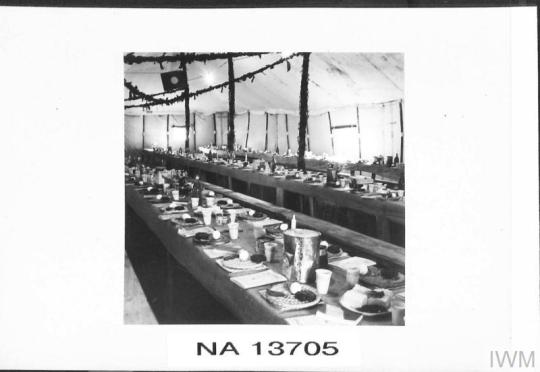


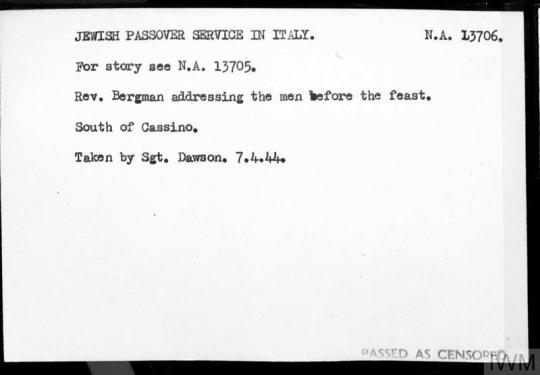
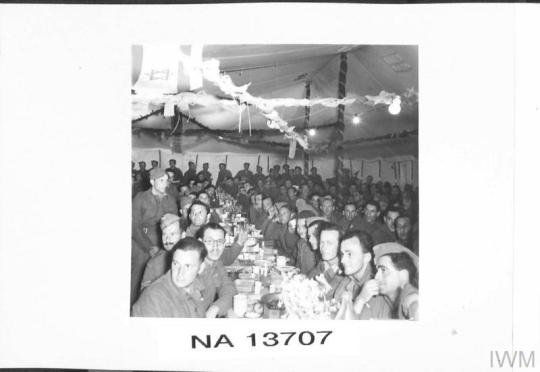

(© IWM NA 13705, NA 13706, NA 13707)
From Yad Vashem, here is an image of an American military-issue Hagadah that was used at a Seder at a British base in Bari attended by both American and British troops (many of the latter were from Mandate Palestine):
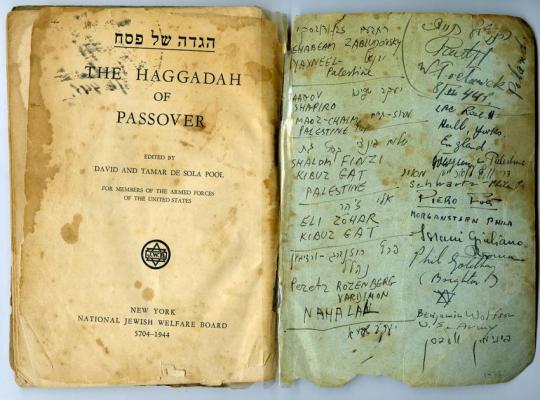
Finally, click here and here to see the covers of two home-made Hagadot used by members of British transport companies.
10 notes
·
View notes
Text
Shabbat Parah 2023 / שַׁבָּת פּרה 5783
Shabbat of the Red Heifer 🕍
Shabbat Parah for Hebrew Year 5783 begins at sundown on Friday, 10 March 2023 and ends at nightfall on Saturday, 11 March 2023. This corresponds to Parashat Ki Tisa.
Shabbat Parah (“Sabbath [of the] red heifer” שבת פרה) takes place on the Shabbat before Shabbat HaChodesh, in preparation for Passover. Numbers 19:1-22 describes the parah adumah (“red heifer”) in the Jewish temple as part of the manner in which the kohanim and the Jewish people purified themselves so that they would be ready (“pure”) to sacrifice the korban Pesach.
7 notes
·
View notes
Text
The Silent Child Steps Up for Pesach 5783
My seder table set-up at Adas Israel A week out of Pesach 5783, and here are my thoughts. The Four Children weighed heavily on me this year. I seem to recall it was a common motif in the Passover Q&A the rabbis at my synagogue, Adas Israel,l held on Shabbat before the holiday. One of the rabbis made it their particular topic of focus—what it means to not know how to ask.
The Passover story is all…

View On WordPress
2 notes
·
View notes
Text
5 April 2023 - 14 Nisan 5783
Today is Erev Pesach, Passover begins at sunset!
Passover, or “Pesach” in Hebrew, is the holiday which celebrates the Exodus of the Jewish people from slavery in Egypt.
Preparations for the holiday will often continue throughout the day, as the first Seder is tonight. A Seder is an orchestrated festive meal, which includes lots of food, singing, the story of the Passover, and other rituals.
During Passover there is a different set of dietary restrictions, which forbids Chametz, leavened bread products. On Erev Pesach, there is customs to burn all such products in your home, and recite a special blessing to “nullify” them.
T'anit Bechorot, The Fast of the First Born, runs from daybreak to sunset today.
473 notes
·
View notes